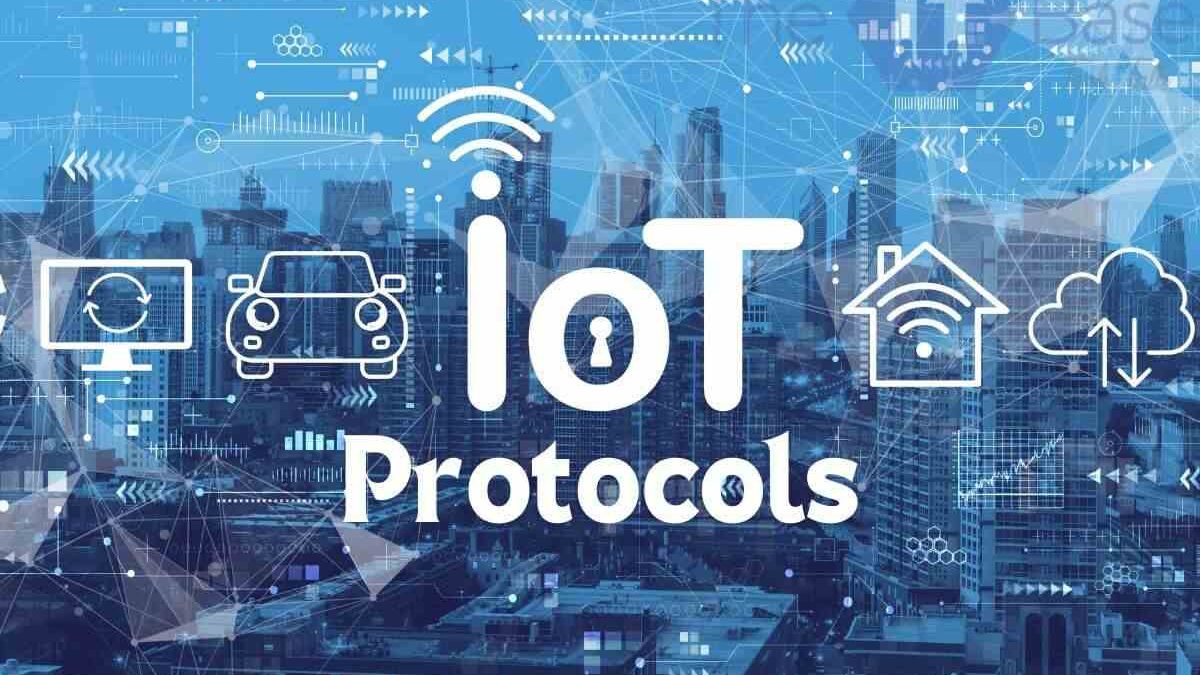Ever wonder how your smart fridge talks to your phone?
Or how does your fitness tracker know to buzz when you’ve hit your step goal?
It’s all thanks to IoT protocols – the secret language of smart devices.
Let’s dive into this techy world and make it as easy as pie to understand.
Table of Contents
ToggleWhat Are IoT Protocols?
IoT protocols are like the rules of the road for smart devices.
They’re the languages that let your gadgets chat with each other and the internet.
Without them, your smart home would be about as useful as a chocolate teapot.
Why Do IoT Protocols Matter?
- They make sure devices can communicate.
- They keep your data safe.
- They help manage power use.
- They make sure everything runs smoothly.
It’s like being the referee in a game of device telephone.
Popular IoT Protocols You Should Know
1. MQTT (Message Queuing Telemetry Transport)
MQTT is like the gossip queen of IoT protocols.
It’s great for sending quick messages between devices.
Perfect for when your smart thermostat needs to tell your AC to chill out.
2. CoAP (Constrained Application Protocol)
Think of CoAP as the minimalist of the group.
It’s designed for devices that don’t have a lot of power or memory.
Like that tiny sensor in your plant pot that tells you when to water.
3. HTTP (Hypertext Transfer Protocol)
The old reliable of the internet world.
HTTP is like that friend who’s been around forever and still shows up at every party.
It’s not specifically for IoT, but it plays well with others.
4. Zigbee
Zigbee is the neighborhood watch of protocols.
It’s great for creating mesh networks where devices talk to each other.
Perfect for smart home setups where your lights, locks, and thermostat all need to chat.
5. Z-Wave
Z-Wave is like Zigbee’s cousin, who’s really into home automation.
It’s designed specifically for smart home devices.
Great for when you want your garage door to tell your lights you’re home.
6. Bluetooth Low Energy (BLE)
BLE is the energy-efficient cousin of regular Bluetooth.
It’s perfect for devices that need to save battery life.
Think fitness trackers and smartwatches.
Choosing the Right IoT Protocol
Picking an IoT protocol is like choosing the right tool for a job.
You wouldn’t use a sledgehammer to hang a picture, right?
Here’s what to consider:
- Power consumption: How long does your device need to last on a battery?
- Range: Does it need to communicate across the room or across the city?
- Security: How sensitive is the data being transmitted?
- Speed: Do you need real-time updates, or is a delay okay?
- Compatibility: What other devices does it need to talk to?
It’s all about finding the right fit for your smart gadget family.
The Future of IoT Protocols
The world of IoT is changing faster than fashion trends.
New protocols are popping up all the time.
Some cool ones to watch out for:
- 5G IoT: Super-fast communication for IoT devices
- LoRaWAN: Long-range, low-power protocol for smart cities
- Thread: Google’s answer to smart home networking
It’s like the IoT world is having a growth spurt.
Security Concerns in IoT Protocols
Now, let’s talk about the elephant in the room – security.
IoT devices can be a hacker’s playground if not protected.
Some protocols are more secure than others.
Always look for protocols that offer:
- Encryption
- Authentication
- Regular security updates
It’s like putting a bouncer at the door of your smart home party.
Real-World Applications of IoT Protocols
Let’s bring this down to earth with some examples:
- Smart Agriculture: Sensors using CoAP to monitor soil moisture
- Healthcare: Wearables using BLE to track patient vitals
- Smart Cities: Traffic lights using MQTT to manage traffic flow
- Home Automation: Z-Wave devices creating a mesh network in your house
It’s like each protocol has its own superpower in the IoT world.
Tips for Implementing IoT Protocols
1. Know Your Needs
Before diving in, figure out what you’re trying to achieve.
It’s like knowing your destination before starting a road trip.
2. Consider Scalability
Will your IoT setup need to grow? Choose a protocol that can grow with you.
3. Test, Test, Test
Don’t just set it and forget it. Make sure everything plays nice together.
4. Stay Updated
IoT protocols evolve. Keep your devices and knowledge up to date.
5. Think About Interoperability
Can your devices talk to others outside their immediate family? They might need to someday.
FAQs About IoT Protocols
Q: Can different IoT protocols work together?
A: Sometimes, but it often requires a gateway or translator device.
Q: Are IoT protocols standardized?
A: Some are, but there’s still a lot of variation out there.
Q: How do I know which protocol my device uses?
A: Check the device specifications or documentation. It’s usually listed there.
Q: Can I change the protocol on my IoT device?
A: Usually not. The protocol is typically baked into the device’s hardware.
Q: Are newer protocols always better?
A: Not necessarily. It depends on your specific needs and setup.
Wrapping Up
These IoT protocols are the workhorses of the smart world that we live in.
They are at work ensuring that our lives are simplified and our gadgets smarter.
Being tech-savvy or a beginner with smart devices, knowing IoT protocols will enable us to make the right decisions when choosing IoT devices and systems.
So the next time your smart coffee maker prepares a perfect cup of coffee when you get up, still bow to the several IoT standards that go with it.
In fact, they are behind the scenes of the entire Internet of Things market phenomenon.
Related posts
Hot Topics
Youth Sports Camps Build Character
We do not all become professional sports players; however, every child can benefit from youth sport programs. There is a…
Best DMARC Lookup Tools: Instantly Check & Verify Your DMARC Records
Choosing the best DMARC lookup tools is essential for any organization that wants to secure its email domain and prevent…



